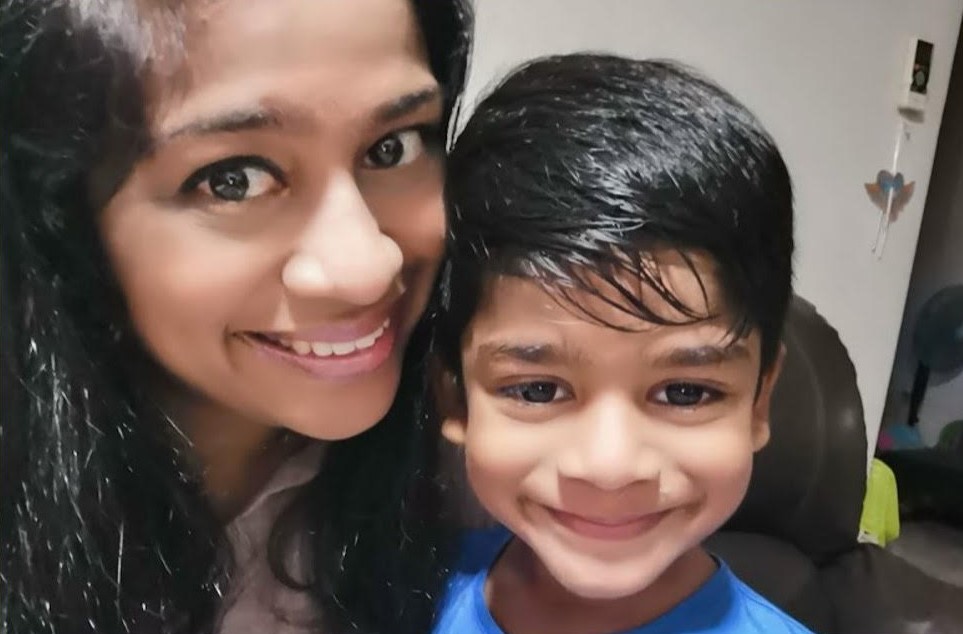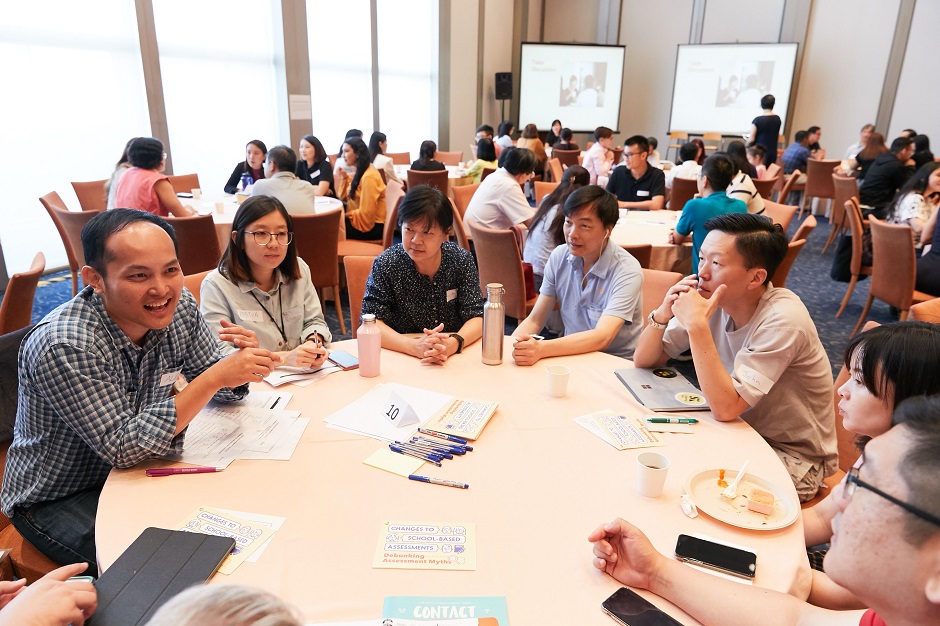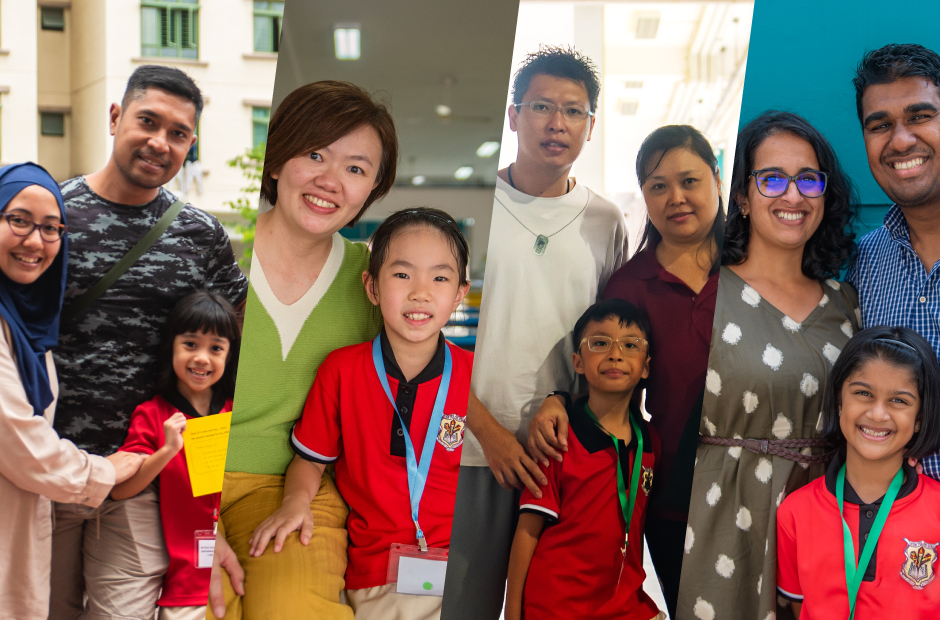The dreaded phone call that every parent hates: a sudden mid-week call from your child’s teacher. My first such call came in February 2020, one week before I was due to return to work after maternity leave for my third child.
My four-and a half-year-old son, my middle one’s kindergarten teacher called to say that she was troubled by his poor focus in class, his weak alphabet structures, and how he seemed to want to give up instead of trying harder. My heart sank as she talked about how far behind my son was compared to his peers and how his left-handedness was an impediment to his learning. Could I not coach him better so he would catch up with his classmates?
What my son’s teacher did not know was that I, too, was an educator, and have had similar conversations about my students with their parents. And now, in an ironic twist, I was the recipient of a similar phone call. Guilt washed over me. I felt like a failed mum, who spent her days teaching her students while her own kid was neglected.
My immediate instinct was to defend my son. In my head, I wondered: why was the teacher not seeing his other attributes, his core strength and agility, his amazing observation skills and memory, which enabled him to easily identify and describe the attributes of more than 60 different dinosaurs. Why did the teacher not find ways to better engage my son, instead of focusing on the point that he was different? Did she realise that he was probably one of the youngest in class as a November baby and was developing slower than his peers? He was just in K1 and had already had 2 different teachers in just 2 months.
As we talked, I realised that the teacher had been trying, but the social pressure of a classroom was making my son freeze up and not respond well to the teacher.
Plans that didn’t work
I came home that day and spoke to my son to understand his struggles. He shared that he was bored in class and did not enjoy the writing activities. In my usual teacher fashion, I tried to coax him to try harder, gave him a hug and even dangled a possible toy treat if he improved.
But my plans backfired.
The next week, I received numerous calls from his kindergarten – almost daily – telling me that my son had vomited and had to be taken home immediately. I would rush from work to bring him to the doctor, only to be told that he was perfectly well. In fact, he would never vomit at home or show any signs of illness that he had exhibited in school!
I quickly realised that his ‘illness’ was psychosomatic. He was feeling stressed by the pressure to do better and also more self-conscious of the extra attention his teacher was giving him. The teacher, too, realised this as his ‘spontaneous illnesses’ would begin right after morning tea break, just before English lessons.
Together, his teacher and I worked out a plan to incentivise him to stay in class and participate in activities. But within a week, before we could do much, we were plunged into a nation-wide circuit breaker to control the spread of the pandemic.
So now it was up to me.
The school at home
My husband and I discussed what we needed to support our son with. He had poor alphabet structures and often mirror-wrote numbers and alphabets. He did not seem too keen on Math and only wanted to be read to, and not read independently. We listed down the ways we wanted to help our son during the eight weeks that he would be home with us. Instead of seeing this as a bump in the road, we wanted these eight weeks to be an opportunity for bonding and working together to help our dear son. Of course, balancing this support system with our own intense work schedules was really draining, so we created daily schedules. Each night, we sat with the kids and planned the next day, so the co-construction was meaningful to all of us. We placed the schedules up on the wall daily so the kids could be self-directed.
We realised that our son did not learn the same way our elder daughter had. He did not respond to rote writing or assessment books. He had very particular interests and was only keen to learn through these interests.
We needed a kindergarten programme at home that would be fun yet educational. As a secondary school teacher, I had little knowledge of early childhood learning strategies, so I was rather out of depth. I could only remember the rote ways of learning writing and arithmetic that I had experienced as a child, so I scoured tons of mummy blogs, videos and books for innovative teaching ideas to improve a preschooler’s writing and numeracy skills. I stayed up after the kids had gone to sleep to create these resources/worksheets.
I have shared details of these activities below, should anyone wish to try them. The good news is that within a week, he began to find learning fun. He came to like his learning journal (i.e. a sketchbook I used to create worksheets and learning games) and would automatically bring it to the table during our daily ‘learning hour’. Then one day, he said, “Mummy, I am going to be a model student by the end of this year!” This was a certificate given by his kindergarten every month to students, who demonstrated good conduct, sound values, interacted well with peers and put in good effort in their work. Hubby and I were blown away by his new-found motivation and encouraged him to try his best, but the award was not everything.
Why no tuition
People often asked us why we did not follow the conventional route of getting ‘tuition’ for phonics reading lessons or Math skills workshops for preschoolers. I am sure these classes would have helped but we felt that my son was already painfully aware of his weaknesses or ‘shortcomings’. What he needed was confidence and people to believe in him, so he could believe in himself to do better, and as parents, we are our kids’ greatest supporters and first teachers. We want the best for our kids but sometimes our kids just want us. We also wanted to learn with him so we could understand if he possibly had a learning need and if we should seek medical intervention.
As stressful as those early days were, we are thankful that during the period of home-based learning, we got this special time to be there for our children and to understand their needs.
In fact, the only enrichment activity our son had was Art lessons, so he could strengthen his hand movements, especially his tripod grip, and draw all his favourite sharks and dinosaurs. If anything, Art lessons gave my son so much pride as he saw his own pieces of work all over the house and he even gifted these to adoring aunts and uncles.

Model student
When he returned to school in June, he was a different kid. He was much more enthusiastic about learning and school. He was not afraid to ask for help from his peers and teachers. He would do his best, and even if he did not write well, he persevered and would try again. He did not give up! Alas, the school had further manpower changes and had relief teachers until late August 2020.
Things really started looking up after the new teacher joined in late August. She had been briefed on my son’s different learning pace. She was very positive and worked to build on his strengths. She soon realised that he actually could read and write well but often mirror-wrote due to his left-handed perspective of writing. To help him, she would write with her left hand to mimic the hand posture and movement, so he understood why 18 was not 81. When the class did a module on marine life, she asked him to share on sharks, which built his confidence and allowed his friends to see a different side of him.
So, finally after six intensive months and a really good teacher, my son was finally at K1 standard and could write well-formed alphabets and numbers and read sight words independently. I often come home from work now to find new art pieces all over the house, with his own small blurbs to describe the art work.
In October, he reached his own goal of being the month’s model student.
Rethinking the phone call
As the youngest kid in class, a left-hander and a kid with very specific interests, my now five-year-old son took a different route to learning in Kindergarten 1. But we are so proud of him for never giving up and always picking himself up and trying again – even through some tears. I’ve learnt so much from him this year – that really nothing is impossible if we put our heart to it and to never underestimate the power of love and belief of others in us. That we can be down but never defeated.
This experience also made me think again about the phone calls I make to my students’ parents.
It made me realise how important it is to be a teacher who calls to deepen the home-school partnership with proactive steps and strategies to help a child be the best that he can be, rather than to simply inform parents of a problem. I realise how important it is to also call to update the parent on good progress and not just on a lack of it.
It also changed the way I parented and viewed learning. I experienced how rich the home environment is in creating learning experiences. We don’t always have time to create learning games but there is so much learning in our daily life. Instead of parking the kids in front of the television while I make lunch, I now get them involved in cooking, learning about different tastes, textures and numbers. Even cleaning up is fun learning!
2020 was a difficult year for many as we worked and studied from home – little did I expect that it would open my eyes to a whole new way of parenting and creating shared family memories!
K2 will be great kiddo – we are gonna do this together!
Activities we did together

Left: Learning sums by giving the figures a haircut! Right: Simple science experiments to practise number sequencing
- Word Hunt Games– My husband focused on helping my son read independently using word hunt games and books on dinosaurs and marine life. Each week, we would focus on specific words from the Peter and Jane reading series. We would then ask our son to find these words in his dinosaur books and highlight them. We also created worksheets with a jumble of words and he would have to identify the words-of-the-week using dot markers.
- Number sequencing through Play – We played Uno to learn about numbers. We started doing science experiments at home to help him understand numbers and sequencing in a fun way. For instance, we made a ‘volcano’ with Playdoh and baking soda. After modelling the experiment for the first time, I wrote down the steps on strips of paper. He would keep redoing the experiment until he got the right sequence, and then he would number the steps.
- Connecting Math with daily life – We would spend the evening reading about volcanoes and also reinforce the sight words of the week in these science books. Soon, he began to see the importance of numbers and started asking me questions about my cooking recipes, so he could number the sequence. With this understanding, he even made an omelette on his own!
- Kinesthetic Math Games – To help him learn simple addition and subtraction, we got him to give ‘haircuts’ to paper dolls. The doll would have, for example, 7 strips of hair, and when he cut 2, he would be left with 5. This also helped with his motor skills in handling scissors. We would play Bingo as a family every night so he would use his dot markers to find numbers, especially double-digit ones.






.jpg)